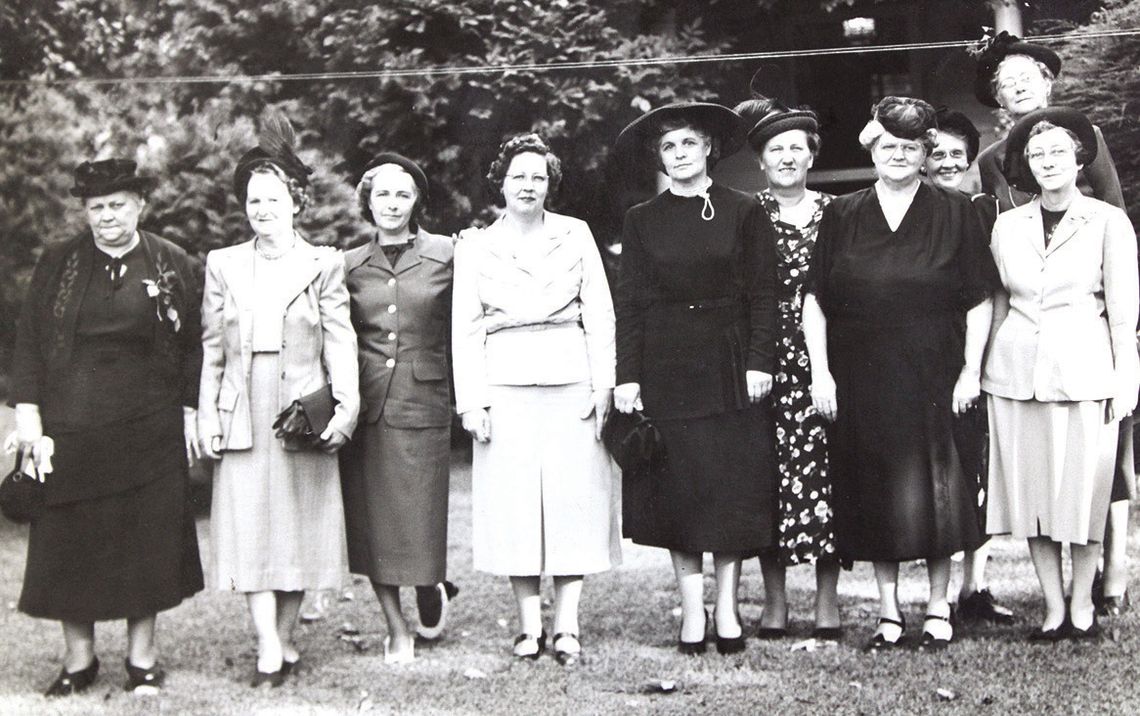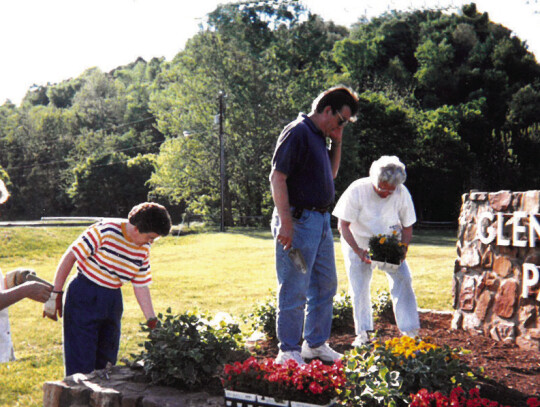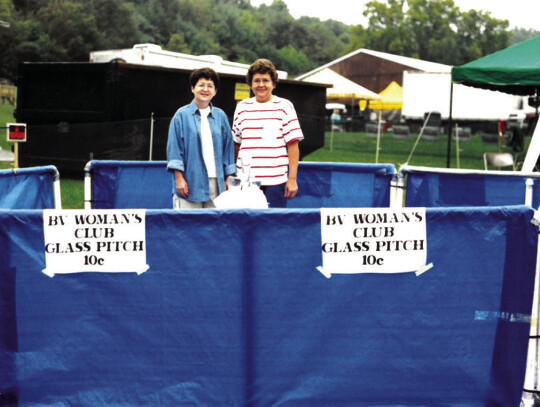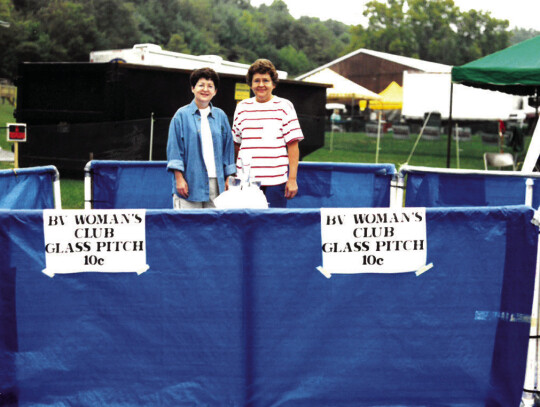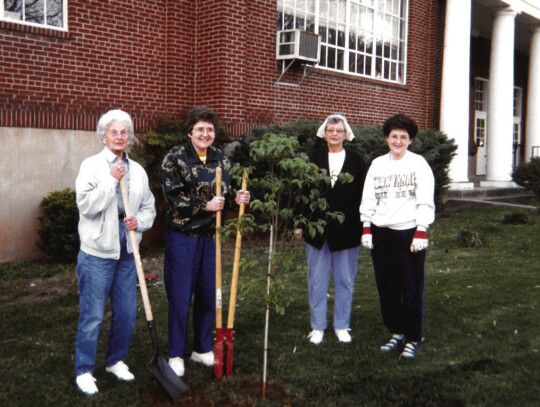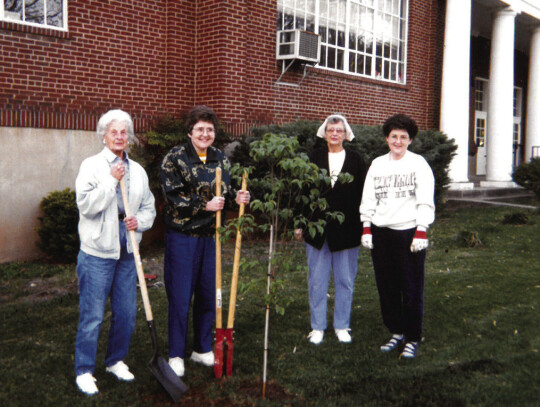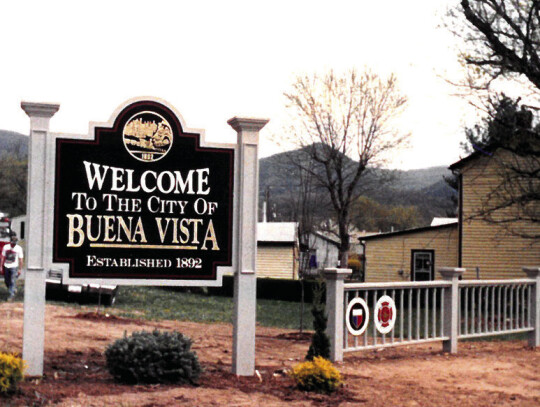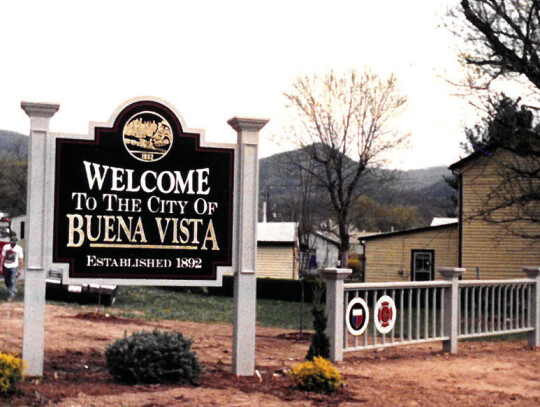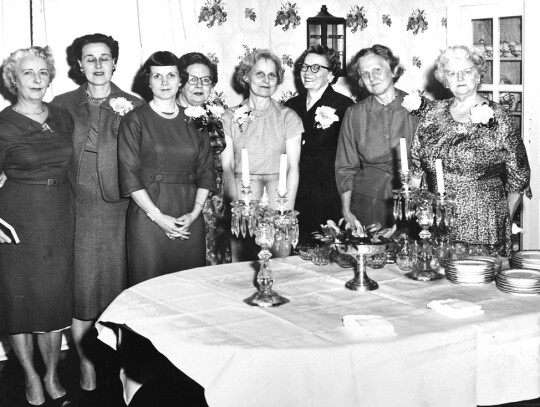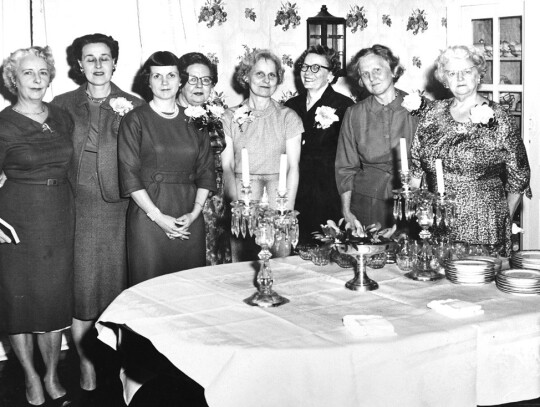For The Cause Which Lacks Assistance, For The Wrongs Which Need Resistance, For The Future In The Distance And The Good It May Do. – object of Civic Improvement League, forerunner of Buena Vista Woman’s Club
The Buena Vista Woman’s Club, celebrating the 100th anniversary of being accepted into the Virginia Federation of Women’s Clubs, traces its origins to this earlier organization. Women members of the Civic Improvement League formed the Buena Vista Woman’s Club about seven years after the league’s 1915 founding.
Marolyn Cash, longtime president of the club who has also served as president of the state organization, has been reading a century’s worth of minutes from monthly meetings to compile a history of the local organization that she shared with this newspaper. This history is being celebrated this Sunday, May 21, from 2 to 4 p.m., at the historic circa-1830s Paxton House, which the club has played a prominent role in restoring.
Cash’s research shows that the club’s history has coincided with much of Buena Vista’s, a city that was incorporated in 1892. The club has long promoted the betterment of the community and has been involved in various endeavors over the years towards that end. In so doing, the club followed in the footsteps of the Civic Improvement League.
Among the league’s early endeavors was to petition the city to eliminate pig sties and require fencing in yards and fields where cows roamed. Another early initiative was to transform the “hitherto unattractive courthouse yard into a beautiful spot” by planting trees and shrubs. The league requested the city place trash cans downtown to contain litter.
A loan closet was established in the early years to provide clothing for the needy. Minutes of meetings show that financial donations were made to the American Legion Auxiliary and Boy Scouts, and $277.75 was given to the local school for a piano. Members donated jelly and preserves to a hospital in Marion for wounded World War I soldiers.
These early leaders were a driving force to establish the city’s first public library, which opened in 1917 with 40 books. By 1930, the library had 1,650 volumes and 350 weekly readers. There was a campaign to put a public drinking fountain downtown that was achieved in 1928, when it was placed in honor of Mrs. R.B. Unholtz, the league’s first president.
An application was made to join the Virginia Federation of Women’s Clubs during the 1922-23 administration. Achieving this affiliation allowed the local organization to gain access to leadership and resources. According to Cash, the club was able to “reach out and become more creative, more responsible and more caring for our neighbors, locally and beyond. Our involvement and support have allowed a small club in Buena Vista to enrich countless lives through this city, the nation and the world. This is something we could never have done by ourselves.”
The league held its meetings in the courtroom of the old courthouse, and in rooms in other downtown buildings – the Dickinson Building and at the library in the Rubush Building. In 1922, just as the league transitioned to the woman’s club, members began meeting in the community room on the second floor of the old firehouse.
Between 1922 and 1942, club members furnished the community room with a piano, tables, chairs, curtains and complete kitchen and dining facilities. In addition to holding its own meetings there, the club served the Rotary Club meals at its weekly meetings in the community room for 20 years as a fundraiser.
In 1931, the club purchased a lot for $600 to build a future club house. The club’s first yearbook was published that year. In 1933, club member Mrs. Evie Key was named to the Virginia Federation of Women’s Club’s roadside beautification committee. The club presented its first scholarship to an outstanding female graduate of Parry McCluer High School in the amount of $5.
Also in 1933, club member Margaret Durham Robey was elected president of the Second District of the VFWC. The Buena Vista Junior Woman’s Club was organized that year. In 1941 – the year the golden jubilee of the General Federation of Women’s Clubs was celebrated – each club was asked to name an outstanding member to be its “Pioneer Woman.” Mrs. R.B. Umholtz was selected for this honor in Buena Vista.
During World War II, 90 percent of the club’s members bought bonds to support the war effort. In fact, the club’s entire club house savings account of $2,307.71 was invested in war bonds. The club sent friendship boxes and letters to allied nurses.
In the years following World War II, the club sponsored a Girl Scout troop and hosted a meeting of the GFWC’s Second District. A new public school was built that included a library. All volumes from the public library were donated to the PMHS library. (Another public library that formed years later was located in the old courthouse.)
There was tremendous interest and growth in the club in subsequent years. Between 1949 and 1953, the club’s membership nearly doubled, growing from 50 to 98. The club made monetary gifts to the Veterans hospital and sent young students to nature camp. Numerous fundraisers were held for a club house fund.
In 1954, Russell and Margaret Durham Robey donated a family residence to the club in memory of his parents. This house, on Forest Avenue across from the post office, became the meeting house for both the woman’s and junior woman’s clubs. The first floor was renovated for this use. The second floor was transformed into a rental apartment to provide funds for the house’s upkeep.
The club got involved in lots of different civic activities. It supported a city ordinance requiring the use of 20-gallon regulation gar-
, page B12 bage cans. The club began annually sponsoring PMHS female students to attend girls state at Virginia Polytechnic Institute (today known as Virginia Tech). The club sponsored attendees to Camp Easter Seal and recognized outstanding female graduates of PMHS.
The club helped raise funds for a children’s clinic. An annual craft bazaar was started that supported the club’s budget. Members participated in club and district arts and crafts contests, with many local residents winning ribbons for their creative entries.
After the new Municipal Building opened in 1969 and was then heavily damaged in the Camille flood, the city wasn’t in any position to fix up the recently vacated old courthouse. So, the woman’s club spearheaded a campaign to save this historic structure, which was built in 1889 for the offices of the Buena Vista Company. The campaign lasted several years but the restoration was eventually completed. The building achieved Virginia historic landmark status and housed the city’s library.
Between 1970 and 1990, the club held an annual spring fashion show that was popular and a successful fundraiser. Club members planted and maintained two flower beds at Glen Maury Park. They also planted dogwood trees each year at Parry McCluer Middle School to celebrate Federation Day. Art contests were sponsored annually for students at PMHS.
The woman’s club played a pivotal role in raising funds for the restoration of the Paxton House at Glen Maury Park. For many years, one of those fundraisers was a dime pitch for glassware at the Laborfest celebration at the park.
Cash was elected president of the Shenandoah District, VFWC, in 1986, and was elected GFWC Virginia treasurer in 1988, holding that position until 1992. In 1996, she was elected president, GFWC Virginia – the only Buena Visa member ever to hold that office. She served on the leadership committee of GFWC for four additional years. Marjorie Dyer was elected president of the Shenandoah District, FVWC, in 2002, becoming the fourth club member to hold this office.
By the early 2000s, declining membership had made it more difficult to maintain the club house. It was sold in 2002, with the proceeds divided equally between the woman’s and junior woman’s clubs. Meetings were then held in homes of members and the fellowship halls of the Buena Vista Presbyterian and St. John’s United Methodist churches. In 2005, the woman’s club started holding its meetings in the Maury River Senior Center, a practice that continued until the onset of the pandemic in 2020.
In 2009, funds provided by the club helped establish a children’s reading room at the library as well as a reading area with comfortable chairs for adults. The club has provided financial support for various causes in Buena Vista – the Renew the Blue campaign to spruce up PMMS, construction of the McCauley Pavilion at The Vista Links golf course, furnishings at the Maury River Senior Center and a gazebo at Penny Park.
Through the years, the club has given a total of $27,245 toward the restoration of the Paxton House. In 2014, a monetary gift from the club allowed for the construction of an exterior bathroom and brick patio on the north side of the house.
“In addition to our commitment to community service, a main focus for the Buena Vista Woman’s Club over our many years has been the education and enlightenment of the members,” said Cash. “Informative speakers and programs have been part of nearly every meeting.”
The club has heard speakers talk about such varied topics as hospice, wills and trusts, medicine, the free clinic, voting regulations, the water treatment plant, recycling, heart health, conservation, Project Horizon, the food pantry and the history of Buena Vista.
The club continues to sponsor a scholarship for a female graduate of PMHS. The amount, originally $5, is now $500. The club makes financial donations to the fire department, rescue squad, Rockbridge Area Health Center, the Buena Vista Colored School, Project Horizon and the food pantry. The club sends greeting cards to residents at Shenandoah Valley Health Care.
Quoting the original creed of the forerunner of the woman’s club, Cash said there continues to be “causes needing assistance and wrongs needing resistance,” so members remain committed to the “good we may do.”
.jpg)
